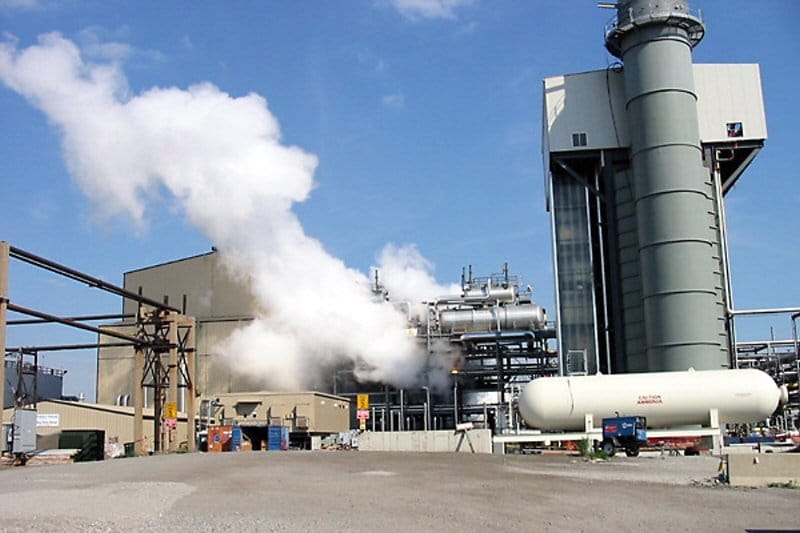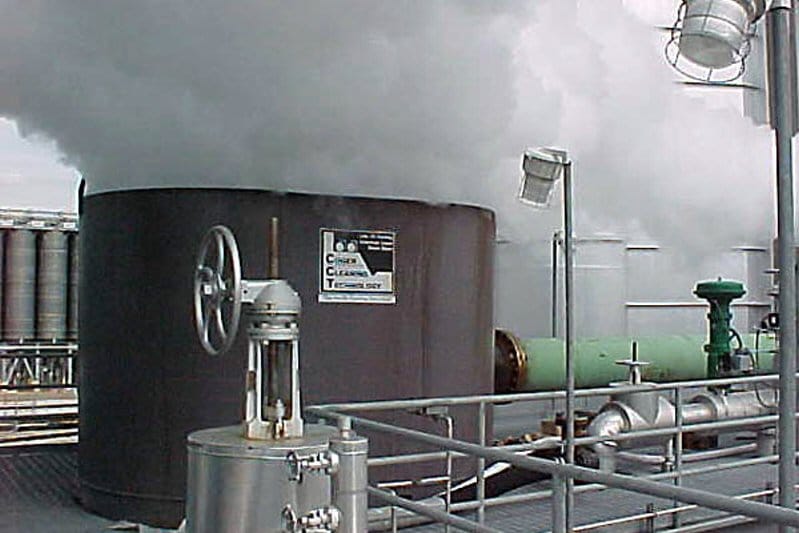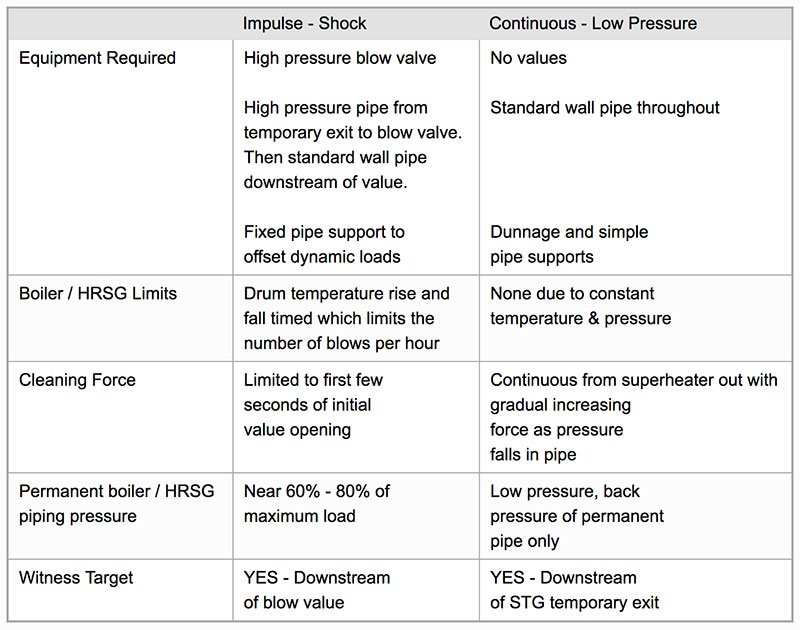Definition: the blowing of steam through piping to remove debris from the pipe, cleaning steam lines to a steam turbine, cleaning plant expansion lines, or new installs. As the definition says, to steam blow a pipe requires steam to blow through the pipe. This pipe can be attached to a boiler or heat recover steam generator, and the other end of the pipe can be attached to a steam turbine.
Steamblows can be done with either water injection into the temporary piping or dry silencers which require no water injection. The circumstances for utilizing each are as follows:
Dry Silencers are utilized where no personnel will come in contact with the temporary piping, the temporary piing is at full exit temperature, this will require the craft people to be quarantined from the area where the steam piping will be routed.
Water injection type silencers do require injection of water down stream of the permanent piping tie-in, as a result the temporary piping temperature is reduced dramatically. This is the safest application for congested work areas that will contain craft personnel.
Generally when the piping is attached to a steam turbine the steam turbine manufacturer has already developed a guideline as to how this piping must be steam blown. There are several general methods already established to complete this and of these NEMA 23 and NEMA 24 are two of the guidelines generally referenced. These are general guidelines and Section 8 of each NEMA procedure is identical as to method and purpose of the steam blow. The accepted method for a steam blow per NEMA 23 and NEMA 24 is an impulse blow where steam is bottled up in the boiler attached to the opposite end of the steam piping to the steam turbine. A break out point at the steam turbine is established and a quick opening valve is attached to this break out and a short piece of pipe is attached to vent the steam in a safe direction.
As can be readily seen this is very loud and sometimes dangerous to perform in confined areas such as where many steam turbines are being placed. Even in the wide open spaces the noise is considerably above given OSHA standards. Additionally, boiler/heat recovery steam generator manufactures have started putting limits on the rate of rise and fall of temperature in the steam drum for these blow which affect their overall performance.
To remedy this obvious noise and danger level, other methods have been developed to abate the sound, and danger. Cogen Cleaning Technology, Inc. has been at the forefront of such methods and has their own method of either a high pressure impulse steam blow or another method called a low pressure continuous steam blow.
CCTs impulse steam blow uses the latest in fast opening hydraulic actuated valves that are hard surface coated to withstand debris many repetitions of opening and closing and complete the impulse blow. As an aid to noise control, CCT utilizes temporary piping from the temporary steam turbine exit with water injection along the temporary pipe to help quench and reduce the volume of steam before it reaches the steam exhauster/silencer. This helps reduce the noise to a level more acceptable to the OSHA standard.
CCT also has refined the low pressure continuous steam blow, where steam is produced by the boiler or heat recovery steam generator and allowed to escape the temporary steam turbine exit into temporary piping. The low pressure method allows for a continuous steam pressure and temperature on the permanent plant equipment. The required steam blow is pre-calculated to use about 45 to 55% of the maximum steam flow at a low pressure. That low pressure is whatever the back pressure of the permanent piping is. This methods works due to the fact that high temperature steam at low pressure has a much higher specific volume than a corresponding temperature steam at high pressure. Therefore, the multiplier in the steam flow calculation is greater in a low pressure situation.
Continuous steam blows can usually be completed much faster than an impulse steam blow. An impulse steam blow takes many valves closing and openings to exhaust the steam at a good cleaning force ratio for only short sections at a time, whereas, a continuous steam blow the steam is always flowing and the cleaning force ratio becomes greater down the line as the pressure drops towards the exit. An impulse steam blow is just short puffs.
Regardless of the method, CCT is fully qualified and ready to handle any requirement for the steam blow of your choice.


Steam Blow Method Differences

